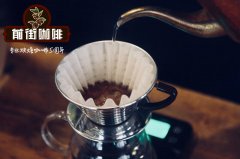What is the native variety? What is the grading system for Ethiopian beans?
Compared with Kenya, beans in Ethiopia are generally of different sizes and have significantly lower evenness. Whether it is Yega Xuefei or Sidamo, whether it is washing or sunlight, sometimes the same batch of coffee beans can be seen to be significantly different in baking color and particle size.
Why are Ethiopian coffee beans always big and small?
Regular Ethiopian coffee drinkers should have heard of the [Heirloom native species], most Ethiopian varieties will be named after this name, in fact, because there are so many Ethiopian varieties, it is like the natural gene bank of Arabica, on the one hand, there are many varieties, and it is difficult to identify and classify them, on the other hand, the Ethiopian government is reluctant to disclose these species information for the sake of protection, so it is collectively called [Heirloom native species].
The grading system of Ethiopian coffee:
In the classification system of Ethiopian coffee, a classification system starting with G and divided into 5 to 1 grades is the most common (Z is a new series that has just emerged in recent years). The smaller the number, the better, mainly looking at the defect rate, based on "every 300 grams of raw beans." the number of defective beans allowed is listed as follows:
Grade
Number of defects
Z
Zero Defect can be found but not sought.
G1
< 3 G2 4–12 G3 13–25 G4 26–45 G5 46–90 UG 排不进分级 埃塞俄比亚约在1970年代引进水洗处理,当时,水洗被视为较高级的方法,因为比较容易得到整齐的品质。因此,早年只有水洗排得进G1–G3,日晒则在G4–G5。不过,近年来,市场上涌现的日晒复兴浪潮,让排得进前三等级的日晒豆,也开始出现,并成为常态。 水洗豆Grade1代表每300克生豆中有瑕疵豆0~3颗; Grade2代表每300克中有缺点豆4~12颗。当然,实际上卖家和买家的瑕疵豆标准肯定是有点不同的(要不然为什么我们可以挑出来那么多瑕疵豆?),但是瑕疵率的对比还是很轻易分辨得出。G1的瑕疵豆明显要比G2的少,这也就是说,排除具体风味和烘焙程度的影响,埃塞俄比亚G1的咖啡豆要比G2的咖啡豆更加优质、评分更高,起码在瑕疵风味上很明显可以区分开来。
Important Notice :
前街咖啡 FrontStreet Coffee has moved to new addredd:
FrontStreet Coffee Address: 315,Donghua East Road,GuangZhou
Tel:020 38364473
- Prev

Introduction to the classification of coffee varieties and the characteristics of coffee variety distribution
Coffee tree is a flowering plant of the genus Coffea of Rubiaceae. At present, there are about 120 species, ranging from small shrubs to 18-meter-tall trees. Wild coffee species grow irregularly in the tropics, and new species are still being discovered. Strictly speaking, there are only two major species of coffee that are cultivated to produce coffee: Arabica coffee (Arabica) and Canifra.
- Next

How many regions and characteristics of coffee species are roughly distributed in the world?
Professional coffee knowledge exchange more coffee bean information Please pay attention to the coffee workshop (Wechat official account cafe_style) Coffee beans can be divided into Arabica species and Robusta species in the global coffee, Arabica species account for about 70% of the total output, has important commercial value. Arabica species spread from the Arabian Peninsula to all parts of the world, depending on the route of transmission.
Related
- Beginners will see the "Coffee pull flower" guide!
- What is the difference between ice blog purified milk and ordinary milk coffee?
- Why is the Philippines the largest producer of crops in Liberia?
- For coffee extraction, should the fine powder be retained?
- How does extracted espresso fill pressed powder? How much strength does it take to press the powder?
- How to make jasmine cold extract coffee? Is the jasmine + latte good?
- Will this little toy really make the coffee taste better? How does Lily Drip affect coffee extraction?
- Will the action of slapping the filter cup also affect coffee extraction?
- What's the difference between powder-to-water ratio and powder-to-liquid ratio?
- What is the Ethiopian local species? What does it have to do with Heirloom native species?

